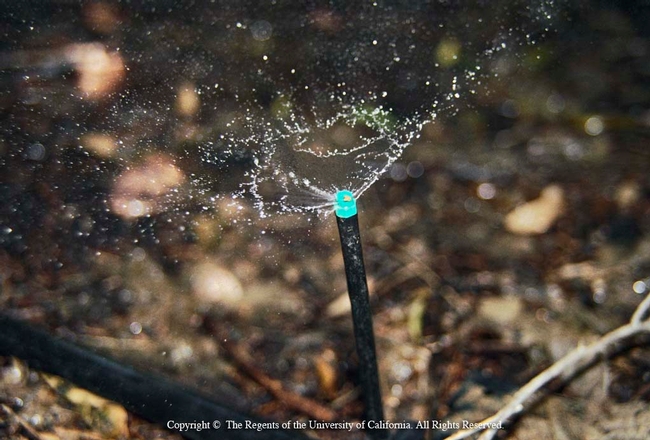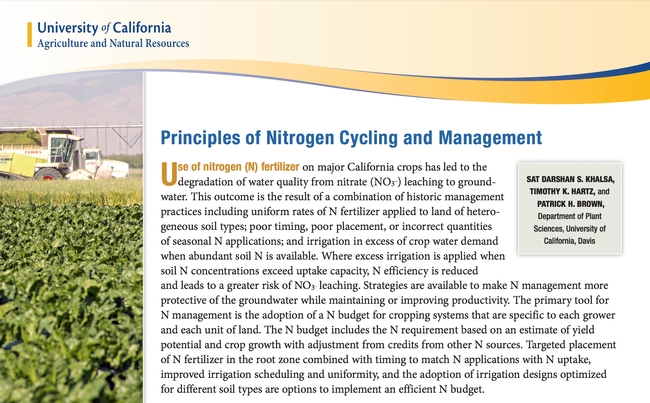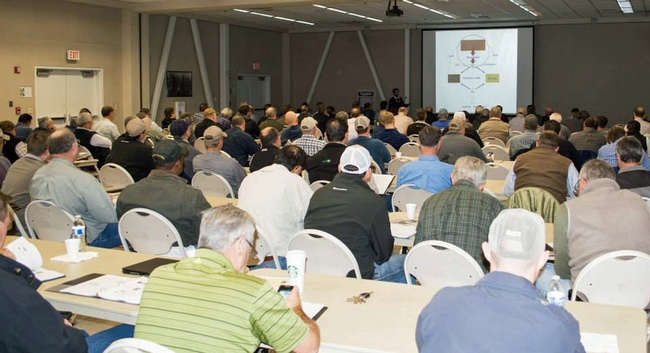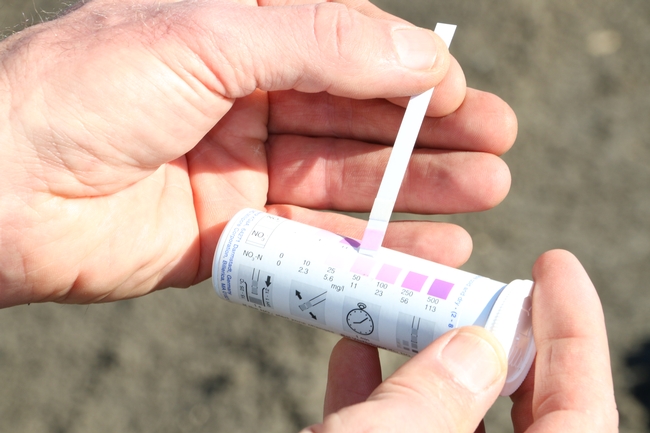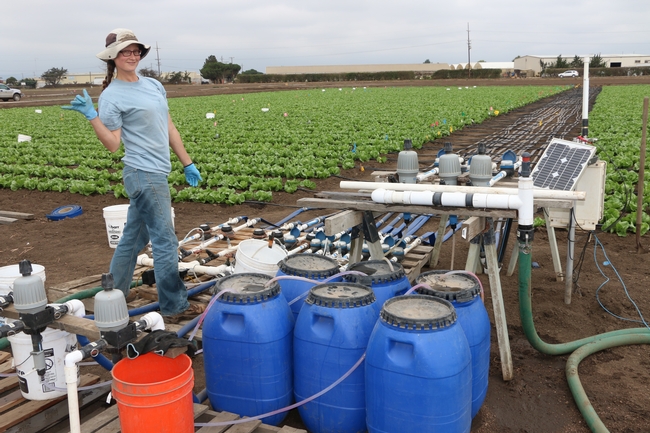Posts Tagged: California Institute for Water Resources
UC ANR publishes nitrogen management advice for fruit, nuts and other crops
California growers can download a new series of publications summarizing efficient nitrogen management practices from UC Agriculture and Natural Resources. The publications are designed to assist growers in complying with state regulations for tracking and reporting nitrogen fertilizer applied to crops, in an effort to prevent nitrogen from leaching into groundwater.
The science-based publications are associated with a series of trainings for growers and Certified Crop Advisers to develop efficient nitrogen management practices, an effort coordinated by UC ANR's California Institute for Water Resources.
“Our role is to provide farmers, agricultural consultants and policymakers the best science possible for making decisions on managing and protecting California groundwater,” said Doug Parker, director of the water institute.
The free publications, created from training materials, lessons learned from the training sessions and from additional UC research, can be downloaded at http://ucanr.edu/nmgmtpublications.
The following publications are now available for download:
· Principles of Nitrogen Cycling and Management
· Irrigation and Nitrogen Management
· Nitrogen Management for Nut Crops
· Nitrogen Management for Deciduous Fruit and Grapes
· Nitrogen Management for Citrus and Avocado
· Nitrogen Management for Cool-Season Vegetables
· Nitrogen Management for Strawberry Production
· Nitrogen Management for Processing Tomato
· Nitrogen Management for Corn on California Dairies
The publications were authored by Parker of California Institute for Water Resources; Patrick Brown, professor in the UC Davis Department of Plant Sciences; Allan Fulton, UC Cooperative Extension advisor, Tehama County; Tim Hartz, UC Cooperative Extension specialist emeritus, UC Davis Department of Plant Sciences; Dan Munk, UC Cooperative Extension advisor, Fresno County; Daniel Geisseler, UC Cooperative Extension specialist, UC Davis Department of Land, Air & Water Resources; Michael Cahn, UC Cooperative Extension advisor, Monterey, Santa Cruz and San Benito counties; Richard Smith, UC Cooperative Extension advisor, Monterey, Santa Cruz and San Benito counties; Marsha Campbell, UC Cooperative Extension advisor emeritus, Stanislaus County; Sat Darshan Khalsa, UC Davis project scientist; and Saiful Muhammad, UC Davis graduate student.
Developed in 2014, the training program has been offered at 11 different locations around the state, most recently in Fresno. More than 1,000 Certified Crop Advisers have taken the training.
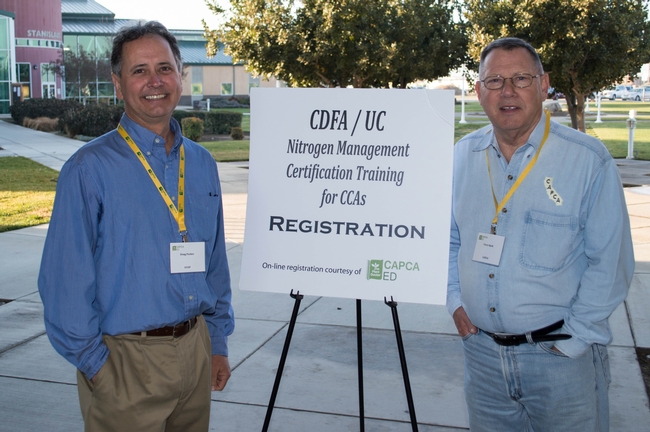
The nitrogen management training curriculum was developed by a group of UC ANR faculty, specialists and advisors. The first day focuses on the nitrogen cycle in crop production systems, nitrogen sources, irrigation and nitrogen management, and nitrogen budgeting. The second morning covers annual and permanent crops and nitrogen planning practices.
For more information on the nitrogen management training materials, visit http://ciwr.ucanr.edu/NitrogenManagement.
The Nitrogen Management Training and Certification Program is a joint effort between the California Department of Food and Agriculture, UC Agriculture and Natural Resources, California Association of Pest Control Advisers' Certified Crop Adviser Program and the Regional Water Boards.
Communication is key to action on California’s new water narrative
UC scientists, students and water agency professionals took a critical look inwards and a radical look outwards when they gathered in Sacramento in October to reimagine California water.
The event was the fourth annual gathering sponsored by UC ANR's California Institute for Water Resources and the University of California Water Security and Sustainability Research Initiative, UC Water.
While science is the hallmark of a research-oriented institution like UC, the participants were asked to recognize their important role not just as scientists but also communicators.
“We have a big role in educating the public,” said Roger Bales, engineering professor at UC Merced who has been active in water and climate research for more than 30 years. “Scientists are political actors. Facts do not speak for themselves.”
Felicia Marcus, chair of the California Water Resources Control Board and a conference panelist, asked the scientists to make their work accessible, and if they are uncomfortable with plain language, “write it both ways.”
“Complexity can lose people easily,” she said.
The conference keynote speaker, futurist Kim Stanley Robinson, also addressed the divide between scientific discourse and popular understanding, in particular when speaking about climate change.
“There is a strange disconnect between what the scientific community is telling the world and what the world is hearing. As a result of data analysis, science is announcing to the world there is climate change. Individuals cannot perceive climate change,” he said. “Show them in ways that can be understood by the senses. The story has to be told with pragmatism and common sense.”
The Reimagining California Water Conference pursued the water journey from the high-mountain headwaters of the Sierra Nevada to the vast groundwater basins in the valleys below. Over the last century, the mountains were blanketed with snow each winter, storing water that melted slowly in the spring and summer to provide a reliable source of water for farming and communities below. However, climate change is telling a new tale. Warmer weather means less snow and more rain will fall on the mountains during the winter. The quick runoff must be managed in a way that preserves it for use in the summer.
“We need groundwater recharge because we're losing the snow pack quicker than we thought we would,” Bales said.
The new California water narrative has prompted scientists and policy makers to take a serious look at the potential for “flood-managed aquifer recharge” or Flood-MAR. Flood-MAR is a management strategy that uses water from rain or snowmelt to flood agricultural lands and working landscapes, such as refuges, floodplains and flood bypasses.
Successful implementation of Flood-MAR requires the identification of land for groundwater recharge, understanding the economic and agronomic impact of using agricultural land for recharge, and impacts of high-volume recharge on groundwater quality. But the potential is enormous.
“The state's underground basins are capable of storing 500 million acre-feet of water,” said Graham Fogg, UC Davis professor of hydrogeology. “That's like 500 Folsom reservoirs.”
Though the enormity of rewriting the California water story might seem an insurmountable challenge, panelist Debbie Franco noted that the passage of Sustainable Groundwater Management in 2014 happened when the state's unsustainable reliance of groundwater spiked during the 2011-2016 drought, reducing municipal water quality, drying domestic wells and causing land to sink.
“What seems impossible, after four years of drought, can be possible,” Franco said. “What will be the next thing? Get a sense of the solutions now.”
New dust sources resulting from a shrinking Salton Sea have negative ecological and health impacts
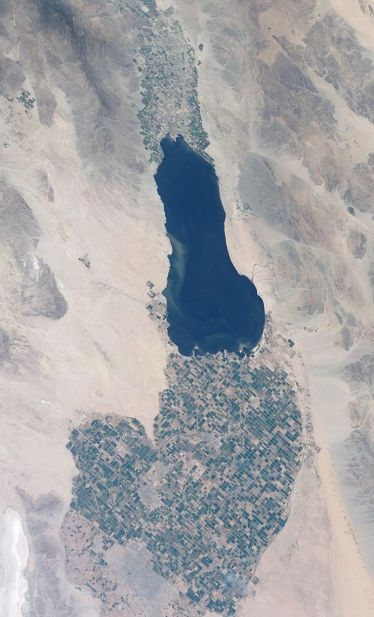
Scientists at UC Riverside investigating the composition of particulate matter (PM) and its sources at the Salton Sea have found that this shrinking lake in Southern California is exposing large areas of dry lakebed, called playa, that are acting as new dust sources with the potential to impact human health.
“Playas have a high potential to act as dust sources because playa surfaces often lack vegetation,” said Roya Bahreini, an associate professor of environmental sciences, who led the research project. “Dust emissions from playas increase airborne PM mass, which has been linked to cardiovascular disease, respiratory disease, and mortality.”
Study results appeared recently in Environmental Science and Technology.
Bahreini's team set out to test whether emissions from playas change the composition of PM10 (particulate matter with diameters up to 10 microns) near the Salton Sea. The team assessed the composition of playa soils (recently submerged underneath the Salton Sea), desert soils (located farther from the sea), and PM10 collected during August 2015 and February 2016.
They found that dust sources contributed to about 45 percent of PM10 at the Salton Sea during the sampling period while playa emissions contributed to about 10 percent. Further, they found that playa emissions significantly increased the sodium content of PM10.
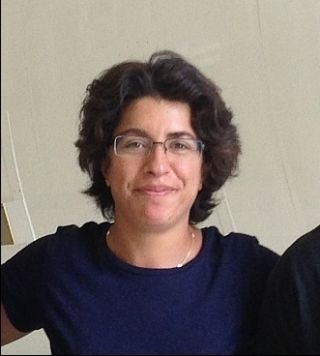
Her team also found that playa soils and PM10 are significantly enriched in selenium relative to desert soils.
Bahreini explained that selenium can be a driver of aquatic and avian toxicity. “Additionally, higher selenium enrichments in PM10 during summertime suggest that selenium volatilization from the playa may become an important factor controlling the selenium budget in the area as more playa gets exposed,” she said.
Alexander L. Frie, a graduate student in environmental sciences and the first author of the research paper, urges that the Salton Sea be paid close attention since, although it is widely considered a large ecological disaster, with no serious monitoring and remediation efforts the sea may also create a human health crisis for the surrounding area.
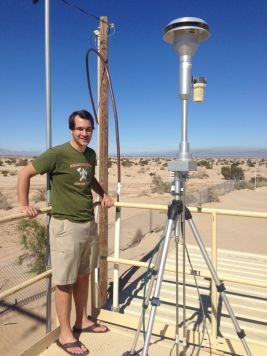
Samantha C. Ying, an assistant professor of environmental sciences and a coauthor on the paper, stresses that monitoring the increase in dust sources over time is necessary to quantify its contribution to local health problems.
“Our study shows that the shrinking Salton Sea is contributing to dust sources in the region,” she said. “Even considering just the small area of playa that is exposed now, the contributions are significant.”
Another concern the researchers point out is that water that is currently diverted from the Colorado River and directed into the Salton Sea is scheduled to end before 2018. The resultant decrease of inflow into the sea will likely cause a decline in water level, exposing more playa, and therefore emitting more dust.
“With more playa being exposed, we expect total PM10 concentrations to increase and human exposure to these particles in downwind areas will also increase,” Bahreini said. “Therefore implementing any project, for example, creating shallow water pools over the playa, that limits formation of salt crusts on the playa will be valuable.”
Bahreini, Frie and Ying were joined in the study by Justin H. Dingle, a graduate student in Bahreini's lab.
The study was funded by UCR Regents' Faculty Development Award, USDA National Institute of Food and Agriculture, a UCR Provost Research Fellowship, the U.S. Geological Survey and ANR's California Institute for Water Resources.
Read more:
KPBS, David Wagner New Study Traces Airborne Dust Back to Shrinking Salton Sea
The Desert Sun, Ian James Studying dust around the Salton Sea, scientists find initial answers
Palm Desert Patch The Hidden, Potentially Deadly, Dangers of The Salton Sea
California nitrogen assessment presents opportunities for improvement
Plants need nitrogen to grow, but excess nitrogen – from livestock facilities, septic systems, car exhaust and other sources – that escapes into groundwater and the air can impact the environment, human health and the climate.
A new report from the Agricultural Sustainability Institute at UC Davis offers a big picture look at the scale and impacts of nitrogen in California. According to the California Nitrogen Assessment, excess nitrogen in the state comes primarily from agriculture and fossil fuel combustion.
The report, published by UC Press, offers a scientific foundation to develop practices and policies that allow nitrogen's benefits while reducing the risk.
For years, UC Agriculture and Natural Resources scientists have been working with farmers throughout the state to refine fertilizer management, irrigation efficiency and other farming practices to manage nitrogen, and the work continues.
The following are some examples of UC ANR research and extension projects underway.
App helps farmers better manage nitrogen fertilizer and water
Growers can use CropManage, developed by Michael Cahn, UC Cooperative Extension advisor in Monterey County, and UC ANR Communication Services and IT staff, to track and manage water and nitrogen fertilizer applications for their crop fields. The online application can be used on mobile devices or computers to help farmers use two tools to conserve water and make better use of nitrogen fertilizer while maintaining crop productivity and quality. Growers use the soil nitrate quick test in the field to measure the nitrogen level of their soil and the app to determine the optimal level of nitrogen fertilizer to apply based on UC ANR research on crop nitrogen use. CropManage also recommends water needs of a crop from weather station data and crop development models.
Matching nitrogen applied to crop need improves efficiency
Richard Smith, UC Cooperative Extension advisor in Monterey County, is leading several research projects evaluating the nitrogen requirements of vegetables including including cole crops, spinach, baby lettuce, a salad mix and cilantro. Smith is evaluating crop rotations with broccoli to scavenge nitrogen from the soil profile. He is also evaluating slow-release fertilizers to minimize nitrate leaching losses in shallow-rooted crops such as baby lettuce and spinach in the Salinas Valley.
Wood chips remove nitrogen in tile drain water
Using wood chips and supplemental carbon sources, Tim Hartz, UC Cooperative Extension specialist in the UC Davis Department of Plant Sciences, worked with Cahn and Smith to refine a process to remove nitrate from tile drain water, which typically is very high in nitrate. The carbon in the wood chips supports the activity of anaerobic bacteria that chemically reduce the nitrate to N2, a benign gas.
Irrigation water fertilizes vegetables
Water quality regulations in many regions of California now require farmers to report the amount of nitrogen fertilizer that they apply to their fields and the nitrate concentration of their irrigation water. Smith, Hartz and Cahn have just finished three seasons of field trials that demonstrated that the nitrate in groundwater supplied a substantial portion of the fertilizer requirements for lettuce and broccoli. By accounting for the nitrate in irrigation water and using the soil nitrate quick test to monitor soil nitrogen levels, growers may be able to significantly reduce the amount of fertilizer nitrogen they apply to vegetable crops.
Micro-irrigation offers almond growers a tool to control leaching
The majority of almond growers apply fertilizer through micro-irrigation systems and an increasing number of growers are irrigating with water that is saline. Patrick Brown, professor in the UC Davis Department of Plant Sciences, is studying how to use micro-irrigation to reduce nitrate leaching and manage soil salinity by varying the frequency of irrigation and the length of time water is applied during irrigation.
Managing irrigation to reduce nitrate leaching
To identify the best irrigation management practices to control soil salinity and to minimize nitrate leaching to groundwater, Laosheng Wu, professor and UC Cooperative Extension specialist in the UC Riverside Department of Environmental Sciences, is using computer simulation to consider soil, water, crop nitrogen demand and fertilization with irrigation methods. In collaboration with UC Cooperative Extension advisors, Wu is conducting field experiments on alfalfa in Imperial County, almonds in the Central Valley and avocados at South Coast Research & Extension Center in Orange County to validate the simulations.
Online tool being developed to estimate soil nitrogen mineralization rates
To develop a tool for growers and crop advisers to estimate soil nitrogen, Daniel Geisseler, UC Cooperative Extension specialist in the Department of Land, Air, and Water Resources at UC Davis, is gathering data throughout California to estimate field-specific nitrogen mineralization rates. This project, funded by UC ANR's California Institute for Water Resources, will use nitrogen mineralization data to develop an online tool to help growers adjust their applications of fertilizer. The tool has the potential to increase nitrogen use efficiency in crop production, resulting in lower risks of nitrate leaching to groundwater.
Nitrogen management training for Certified Crop Advisers
Between 2014 and 2016, approximately 900 Certified Crop Advisers participated in a nitrogen management training program coordinated by UC ANR's California Institute for Water Resources with support from CDFA's Fertilizer Research and Education Program. The technical and applied training improves CCAs' understanding of sound nitrogen management practices to make informed recommendations to growers.
The California Nitrogen Assessment book
The book, “The California Nitrogen Assessment: Challenges and Solutions for People, Agriculture, and the Environment,” is available for purchase at ucpress.edu. The 20-page executive summary can be downloaded for free at asi.ucdavis.edu.
This story is also available in Spanish: "La evaluación del nitrógeno en California ofrece oportunidades para mejorar http://ucanr.edu/sites/Spanish/Noticias/boletines/?uid=6884&ds=199
UC Irvine’s Sorooshian to lead Rosenberg International Forum on Water Policy
The University of California Division of Agriculture and Natural Resources (UC ANR) has appointed Soroosh Sorooshian as chair of the Rosenberg International Forum on Water Policy. Sorooshian is distinguished professor of civil and environmental engineering and earth sciences at UC Irvine.
The forum, a program of UC ANR's California Institute for Water Resources, was launched in 1996 with an endowment gift from the Bank of America honoring then-retiring bank chairman and CEO Richard Rosenberg. Experts from all over the world convene at the Rosenberg Forum to identify ways in which conflict in the management of water resources can be reduced and to promote science-based policies to govern the management of water resources.
“I'm delighted that the University of California, through the Rosenberg International Forum on Water Policy, is carrying out the vision of Richard Rosenberg in reducing conflict in water resources management through dialogue and information sharing between scientists and policymakers,” said UC President Janet Napolitano. “We are pleased that Dr. Soroosh Sorooshian, with his wide range of expertise and prominence in the international community, will be leading this important work as the incoming chair of the Rosenberg Forum.”
The forum meets biennially at different locations around the world. Previous forums have been held in San Francisco (1997), Spain (1999 and 2008), Australia (2002), Turkey (2004), Canada (2006), Argentina (2010), and Jordan (2013). The most recent forum was in January 2016 in Panama City, Panama.
“Over the past 30 years, the Rosenburg Forum has raised UC's stature in international water conflict resolutions,” said Glenda Humiston, UC vice president for Agriculture and Natural Resources. “The forum will continue to develop new approaches and solutions to addressing water problems around the world under the leadership of Dr. Sorooshian, an accomplished and brilliant scientist.”
Attendance at the forum is by invitation and limited to 50 water scholars and senior water managers. Participants devote their time at each forum to discussions of previously commissioned papers, which are published following the meeting. The conclusions and findings of each forum are also published.
“The need for approaches and solutions to securing clean, reliable water sources crosses all political, ethnic and territorial boundaries,” said UC Irvine Chancellor Howard Gillman. “But how we get to those solutions varies greatly, depending on culture, financial resources and social norms. I'm confident that Soroosh Sorooshian will be able to find ways to transcend the differences and find workable solutions for all. I'm proud that UCI can contribute to making great progress on such global issues.”
Sorooshian is also director of the Center for Hydrometeorology and Remote Sensing in the Henry Samueli School of Engineering at UC Irvine. His fields of interest include hydrometeorology, water resources systems, climate studies and application of remote sensing to water resources issues in arid and semi-arid zones. Sorooshian is a member of the National Academy of Engineering and has garnered many international and national awards for his work. His appointment was effective April 1, 2016.
“I am honored to be appointed chair of the Rosenberg Forum and serve after my dear colleague Henry Vaux Jr., professor emeritus of resource economics at the University of California Riverside, who has filled this role since the forum was established,” Sorooshian said. “I've also had the pleasure of meeting Mr. Rosenberg. He is a remarkable and humble man whose wisdom and knowledge of international issues are unmatched. I thank him for sharing his vision of the role the Rosenberg Forum can play in addressing international water issues, and I look forward to this new opportunity.”
